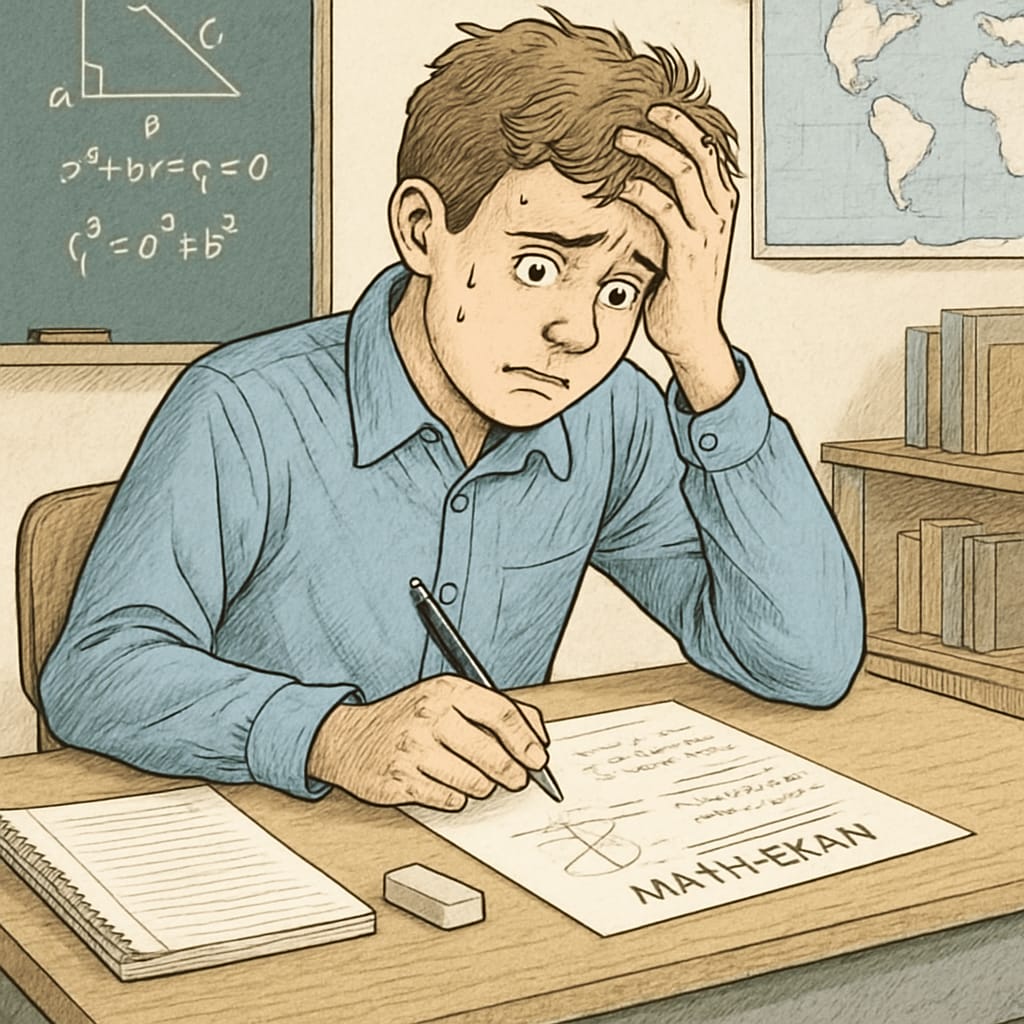Math anxiety, especially during the multiple-choice section of exams, is a significant challenge for many high school students. This form of test stress not only impacts academic performance but can also erode confidence over time. A 17-year-old transfer student, Emily, shared her experience of struggling with math anxiety after moving to a new school with a rigorous curriculum. Her story illustrates how such fears can be managed and eventually overcome. In this article, we’ll explore the psychological mechanisms behind math anxiety and provide actionable strategies to tackle it effectively.
Understanding the Roots of Math Anxiety
Math anxiety is more than just a dislike for numbers; it’s a psychological response that can manifest as tension, worry, or even physical symptoms like sweating and nausea. According to research, the brain’s fear center, the amygdala, becomes overactive when individuals perceive math problems as threats. This heightened emotional response can impair the prefrontal cortex, which is responsible for logical reasoning and problem-solving. As a result, students often feel overwhelmed, especially during multiple-choice sections where the pressure to select the “one correct answer” can be paralyzing.
Factors contributing to math anxiety include past experiences, societal stereotypes, and even teaching methods. For Emily, the transition to a new school amplified her stress. She felt unprepared for the format of multiple-choice questions, which required both precision and speed. Understanding the roots of her anxiety was the first step toward addressing it.

Why Multiple-Choice Questions Trigger Stress
Multiple-choice questions (MCQs) are often perceived as deceptively simple, but they can be a significant source of stress. Here’s why:
- Pressure to Choose: The fear of selecting the wrong answer can cause second-guessing, leading to time mismanagement.
- Distractors: Incorrect options, known as distractors, are designed to be plausible, increasing uncertainty.
- Limited Time: The ticking clock adds an extra layer of pressure, making it harder to focus.
Emily shared that she would often freeze when faced with MCQs, spending too much time on one question and leaving others unanswered. This is a common scenario for students with math anxiety.
Strategies to Overcome Math Anxiety in Multiple-Choice Exams
Overcoming math anxiety requires both psychological and practical strategies. Here are some techniques Emily found helpful:
1. Cognitive Restructuring
Cognitive restructuring involves changing negative thought patterns. For example, instead of thinking, “I’m bad at math,” students can reframe their mindset to, “I’m still learning, and practice will help me improve.” This shift in perspective reduces the emotional burden of math exams.
2. Practice with Multiple-Choice Questions
Familiarity breeds confidence. Regularly practicing MCQs helps students recognize common question formats and patterns. Websites like Khan Academy offer free resources for this purpose.
3. Time Management Techniques
Learning how to allocate time efficiently is crucial. One effective method is the “two-pass strategy.” During the first pass, answer questions you’re confident about. On the second pass, tackle the more challenging ones. This approach ensures no question is left unanswered.
4. Relaxation Techniques
Simple relaxation techniques, such as deep breathing or visualization, can help calm the mind before and during the exam. Emily found that taking a few deep breaths before starting an MCQ section helped her focus better.
5. Seek Support
Finally, students should not hesitate to seek help from teachers, tutors, or school counselors. Educators can provide guidance on tackling MCQs, while counselors can offer strategies to manage anxiety.

From Fear to Confidence: Emily’s Journey
Emily’s turning point came when she started applying these strategies. With consistent practice and support, her anxiety gradually diminished. By the end of the school year, she not only improved her math scores but also regained her self-confidence. Her journey demonstrates that math anxiety, while challenging, is not insurmountable.
In conclusion, math anxiety, especially during multiple-choice exams, is a common yet manageable issue. By understanding its psychological roots and implementing practical strategies, students can transform their fear into a sense of control. As Emily’s story shows, overcoming math anxiety is not just about improving test scores—it’s about rebuilding confidence and fostering a positive relationship with learning.
Readability guidance: Short paragraphs and bulleted lists summarize key points, ensuring clarity. Active voice is used throughout, with transitions like “however” and “for example” to maintain flow.


